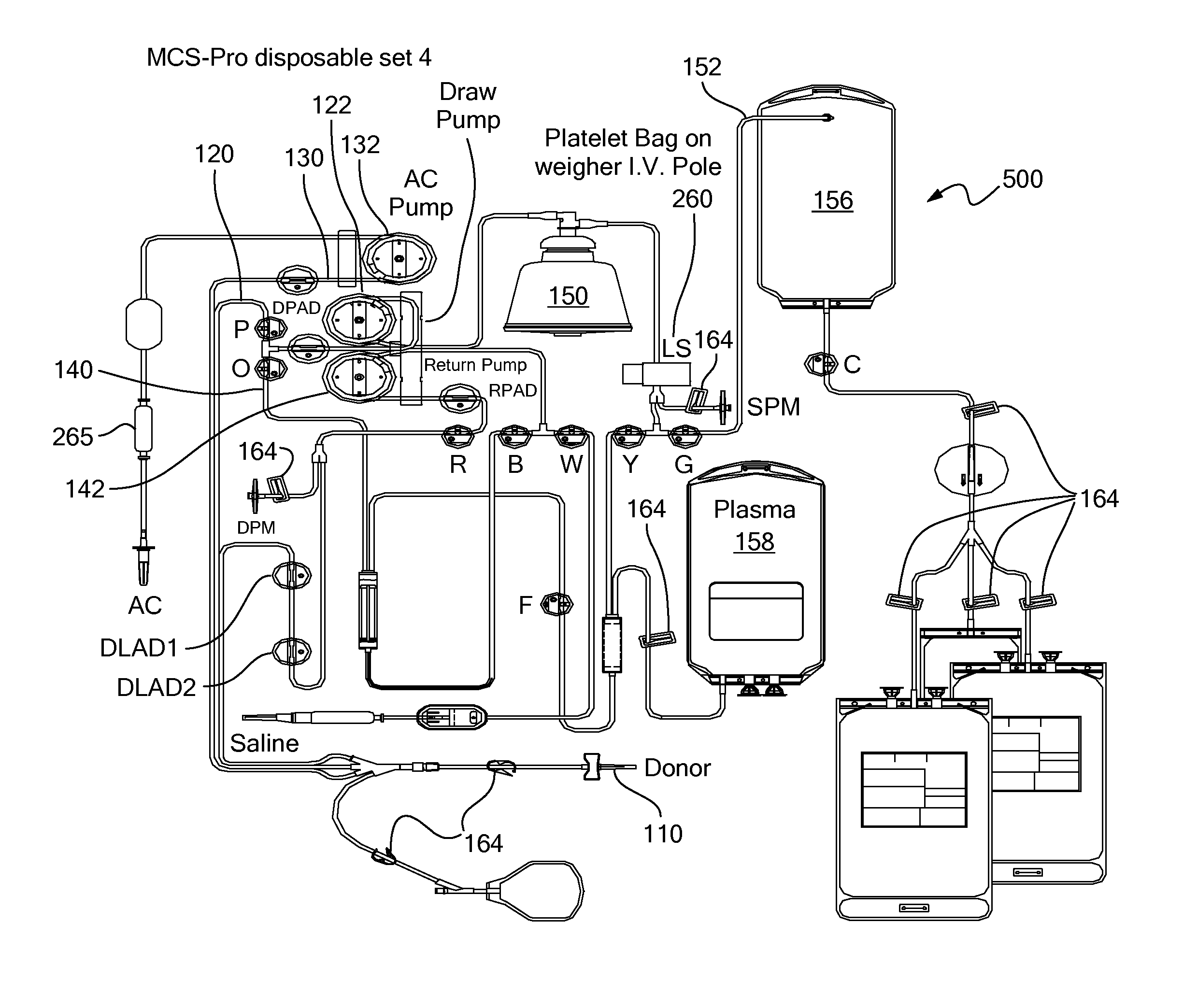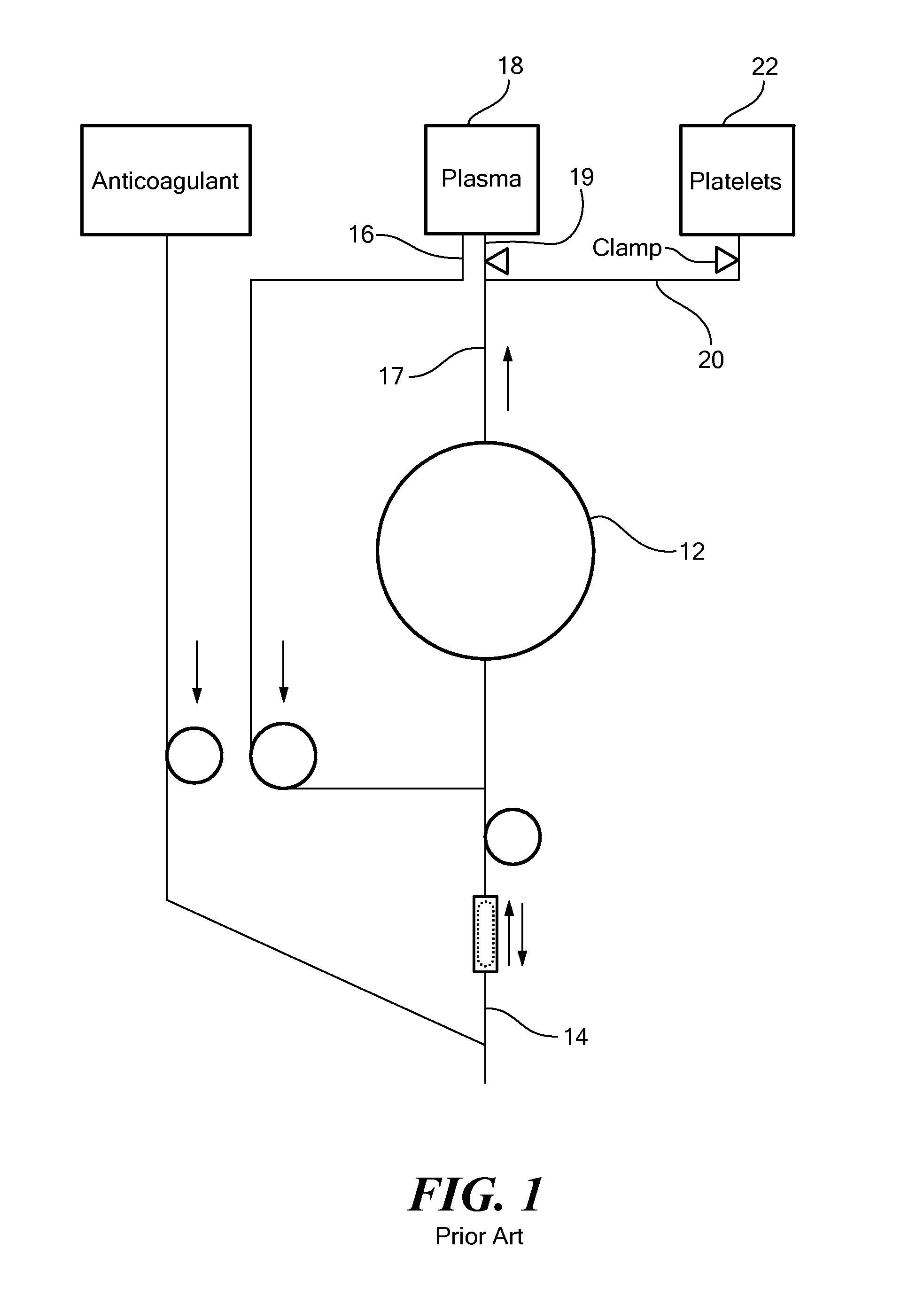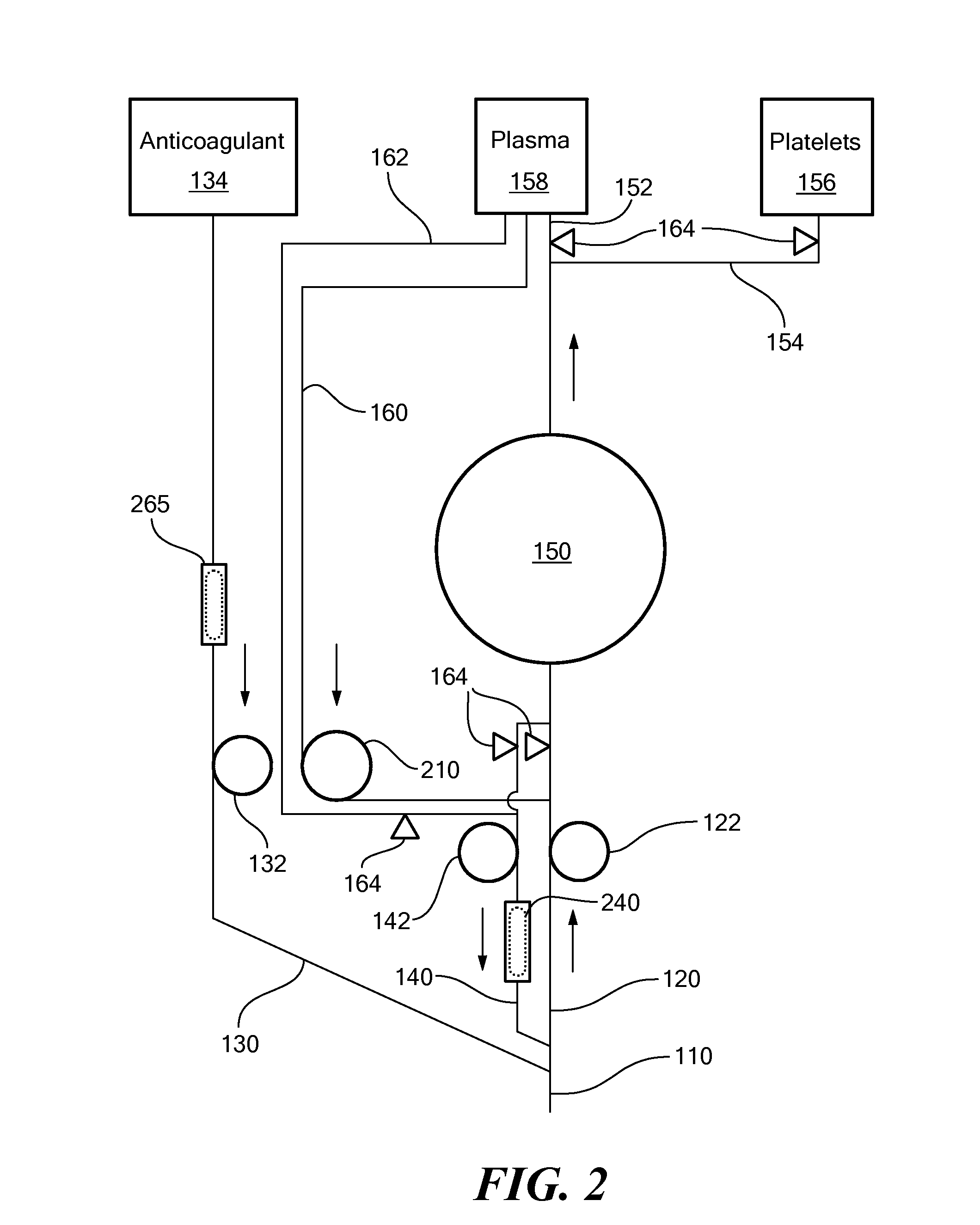Three-Line Apheresis System and Method
a three-line apheresis and apheresis technology, applied in the field of three-line apheresis systems, can solve the problems of increasing the overall procedure time, lag time, and the number of access ports between continuous and discontinuous separation devices
- Summary
- Abstract
- Description
- Claims
- Application Information
AI Technical Summary
Benefits of technology
Problems solved by technology
Method used
Image
Examples
Embodiment Construction
[0023]Embodiments of the present invention provide a system and method for performing blood apheresis procedures. Specific embodiments offer three-line, single access blood apheresis systems that provide for a decreased overall procedure time, with only limited “dead times,” decreased extra corporeal volume, processing of all drawn blood and minimum exposure of drawn blood to processed returned blood. The method and system may use dedicated lines for withdrawing blood from a subject, introducing anti-coagulant into the drawn blood, and returning unused or processed blood components to the subject. Details of the illustrative embodiments are discussed below.
[0024]As shown in FIG. 1, and as mentioned above, prior art systems 10 utilizing two-port separation devices (e.g., centrifuge bowl 12) draw whole blood from the donor or patient through a conduit 14 into the centrifuge bowl 12, where component separation takes place. When there is sufficient volume in the bowl 12, the system 10 s...
PUM
 Login to View More
Login to View More Abstract
Description
Claims
Application Information
 Login to View More
Login to View More - R&D
- Intellectual Property
- Life Sciences
- Materials
- Tech Scout
- Unparalleled Data Quality
- Higher Quality Content
- 60% Fewer Hallucinations
Browse by: Latest US Patents, China's latest patents, Technical Efficacy Thesaurus, Application Domain, Technology Topic, Popular Technical Reports.
© 2025 PatSnap. All rights reserved.Legal|Privacy policy|Modern Slavery Act Transparency Statement|Sitemap|About US| Contact US: help@patsnap.com



